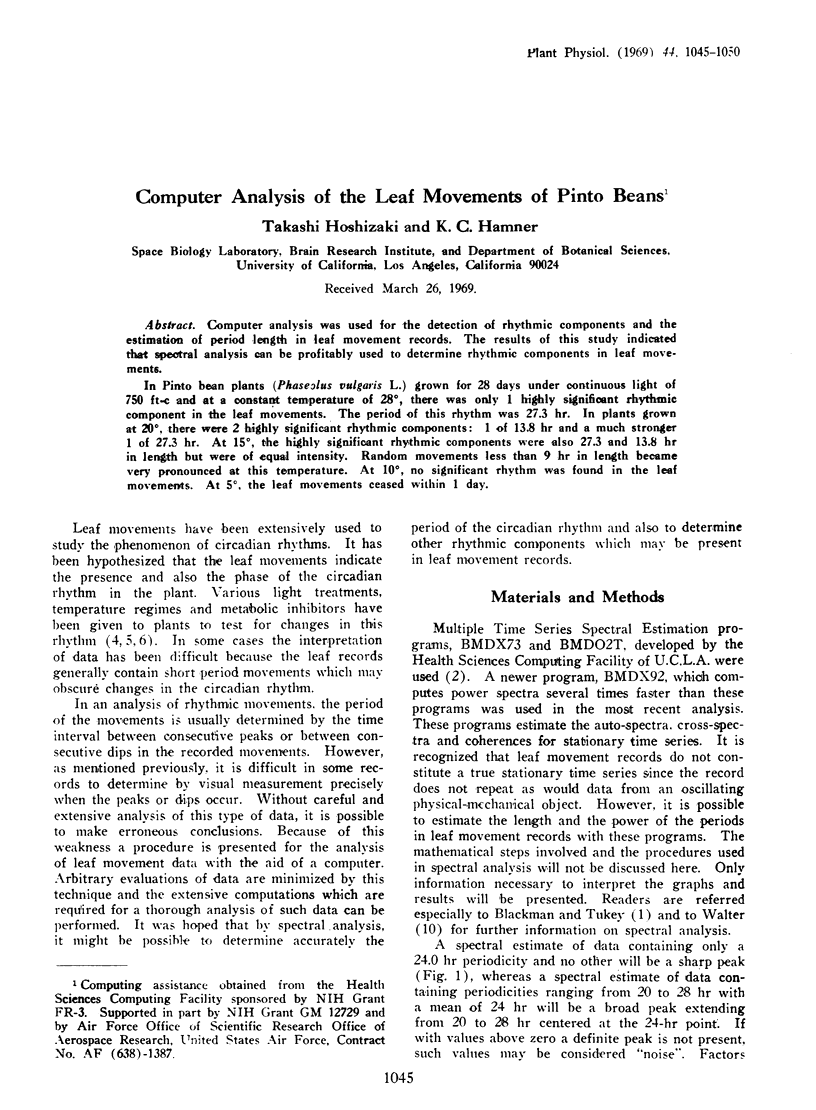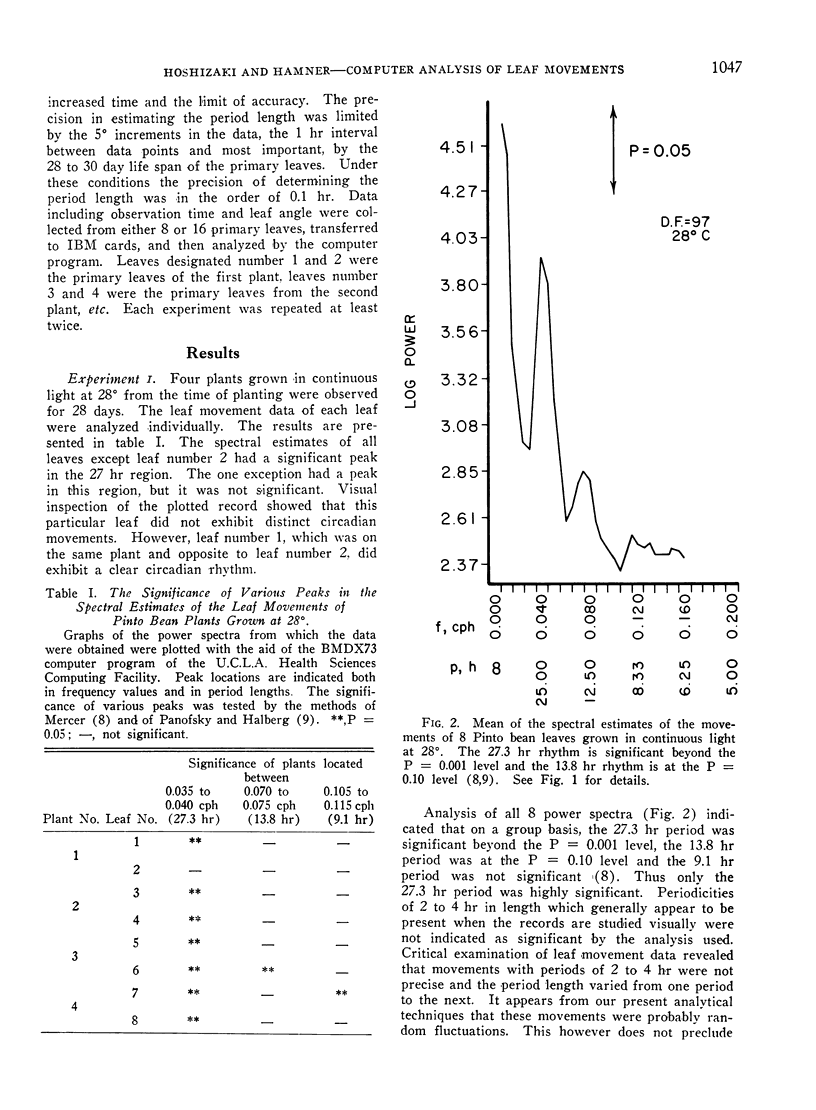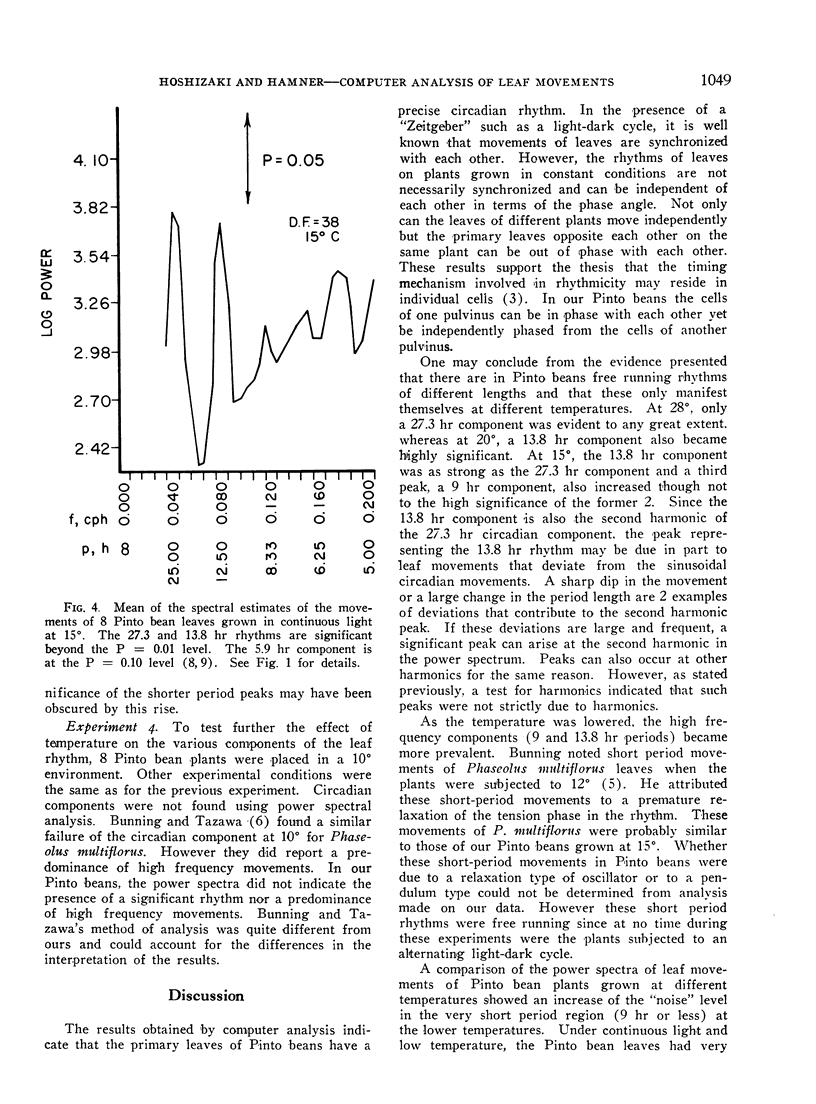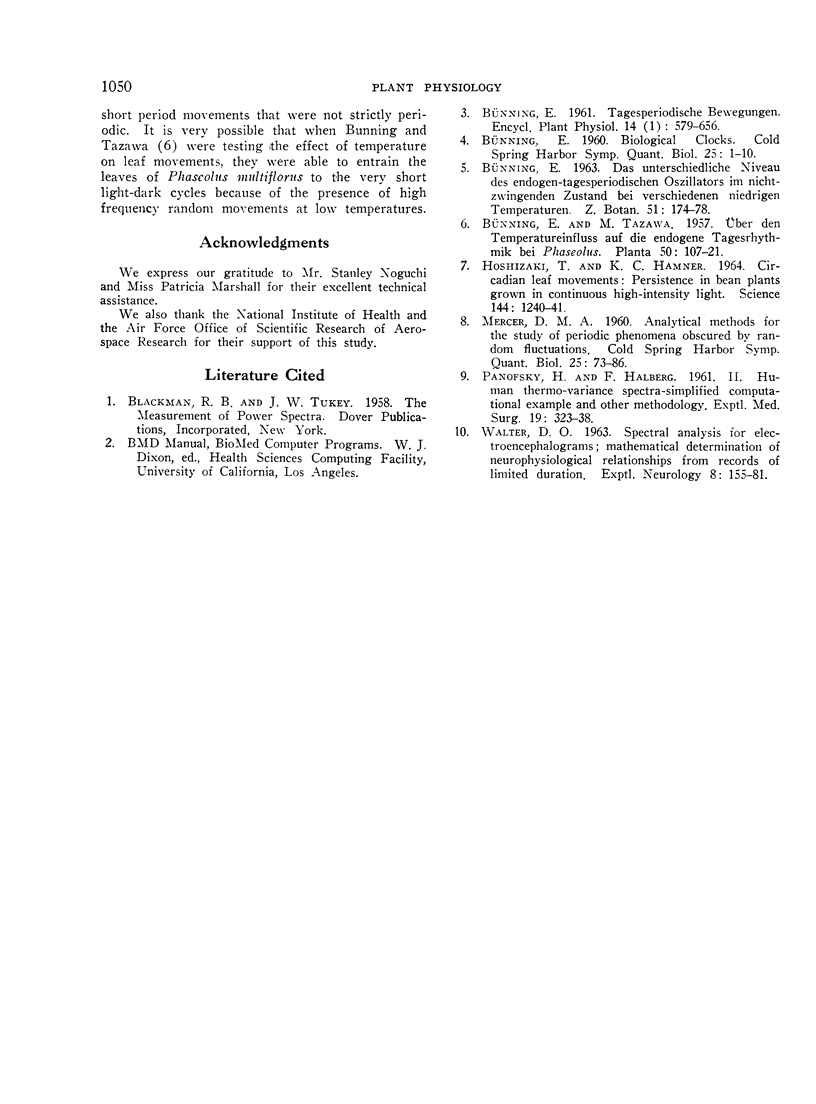Abstract
Computer analysis was used for the detection of rhythmic components and the estimation of period length in leaf movement records. The results of this study indicated that spectral analysis can be profitably used to determine rhythmic components in leaf movements.
In Pinto bean plants (Phaseolus vulgaris L.) grown for 28 days under continuous light of 750 ft-c and at a constant temperature of 28°, there was only 1 highly significant rhythmic component in the leaf movements. The period of this rhythm was 27.3 hr. In plants grown at 20°, there were 2 highly significant rhythmic components: 1 of 13.8 hr and a much stronger 1 of 27.3 hr. At 15°, the highly significant rhythmic components were also 27.3 and 13.8 hr in length but were of equal intensity. Random movements less than 9 hr in length became very pronounced at this temperature. At 10°, no significant rhythm was found in the leaf movements. At 5°, the leaf movements ceased within 1 day.
Full text
PDF





Selected References
These references are in PubMed. This may not be the complete list of references from this article.
- Hoshizaki T., Hamner K. C. Circadian Leaf Movements: Persistence in Bean Plants Grown in Continuous High-Intensity Light. Science. 1964 Jun 5;144(3623):1240–1241. doi: 10.1126/science.144.3623.1240. [DOI] [PubMed] [Google Scholar]
- MERCER D. M. Analytical methods for the study of periodic phenomena obscured by random fluctuations. Cold Spring Harb Symp Quant Biol. 1960;25:73–86. doi: 10.1101/sqb.1960.025.01.008. [DOI] [PubMed] [Google Scholar]
- PANOFSKY H., HALBERG F. Thermo-variance spectra; simplified computational example and other methodology. II. Exp Med Surg. 1961;19:323–338. [PubMed] [Google Scholar]


